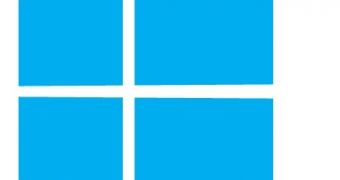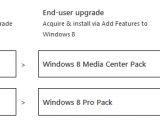Windows 8 won’t arrive this fall with support for DVD playback, nor with the Media Center packed inside, Microsoft has officially confirmed.
At launch, the next-generation platform will bring only the Windows Media Player along, with support for content downloaded or streamed over the Internet.
However, those users who would also like to benefit from support for DVD playback, will have to add the feature after purchasing Windows 8 and will need to pay extra for it.
In a blog post authored by Bernardo Caldas in the Windows Business Group, with help from Linda Averett who leads program management for the Developer Experience team, specific info on the matter are provided.
Apparently, the amount of video content consumed from online sources such as YouTube, Hulu, Netflix, and others more has surged significantly lately, pushing the consumption of physical video back.
Combined with a significant decrease in sales of DVDs and other physical media, this trend shows that DVD & broadcast TV consumption on the PC is dropping still.
“Globally, DVD sales have declined significantly year over year and Blu-ray on PCs is losing momentum as well. Watching broadcast TV on PCs, while incredibly important for some of you, has also declined steadily,” the aforementioned blog post reads.
Thus, Microsoft decided to remove support for this media from the standard versions of Windows 8, so that the price of its platform would also remain low.
“These traditional media playback scenarios, optical media and broadcast TV, require a specialized set of decoders (and hardware) that cost a significant amount in royalties,” the company notes.
“With these decoders built into most Windows 7 editions, the industry has faced those costs broadly, regardless of whether or not a given device includes an optical drive or TV tuner.”
However, this does not mean that users will be stripped of the possibility to enjoy the feature on their PCs, but only that they will have to pay more to have it.
“Given the changing landscape, the cost of decoder licensing, and the importance of a straight forward edition plan, we’ve decided to make Windows Media Center available to Windows 8 customers via the Add Features to Windows 8 control panel (formerly known as Windows Anytime Upgrade),” Microsoft notes.
All Windows 8 users will get a taste of the Windows Media Player, though without DVD playback support. Through the installation of Windows 8 Media Center Pack atop of Windows 8 Pro, or that of Windows 8 Pro Pack on Windows 8, customers can change that.
These packs will bring Media Center to devices, “including DVD playback (in Media Center, not in Media Player), broadcast TV recording and playback (DBV-T/S, ISDB-S/T, DMBH, and ATSC), and VOB file playback,” Microsoft explains.
For the time being, Microsoft did not offer specific info on the pricing of these packs, nor on the cost that the retail versions of Windows 8 will have attached. More on this will be unveiled closer to the availability date.

 14 DAY TRIAL //
14 DAY TRIAL // 
